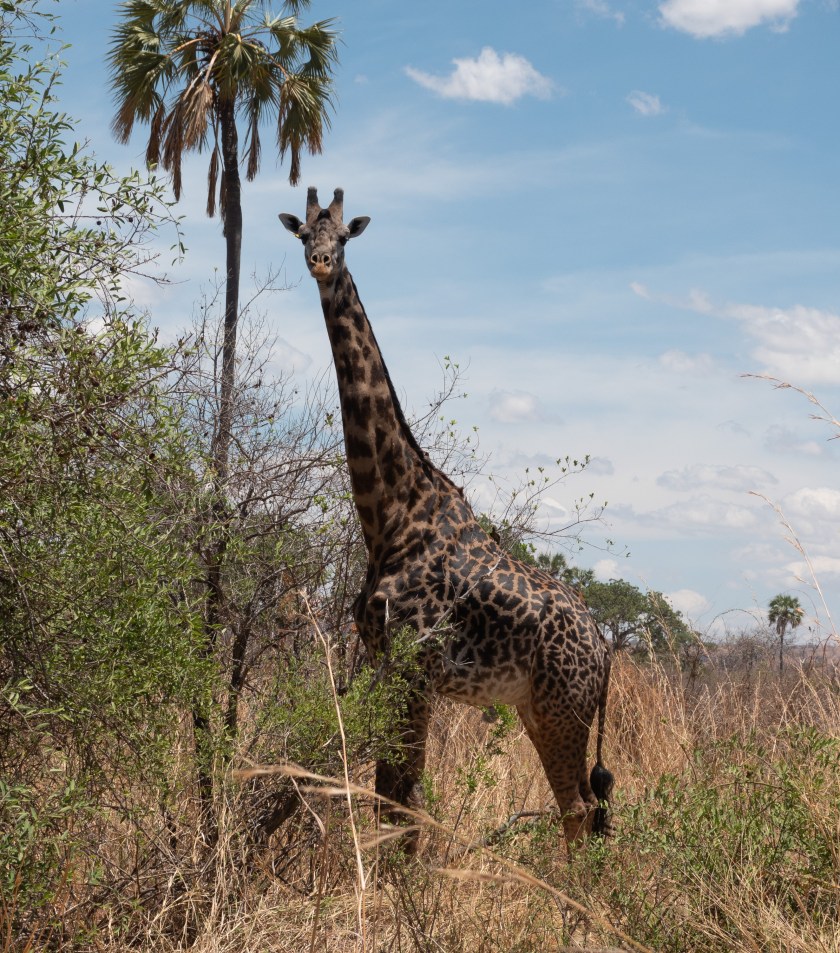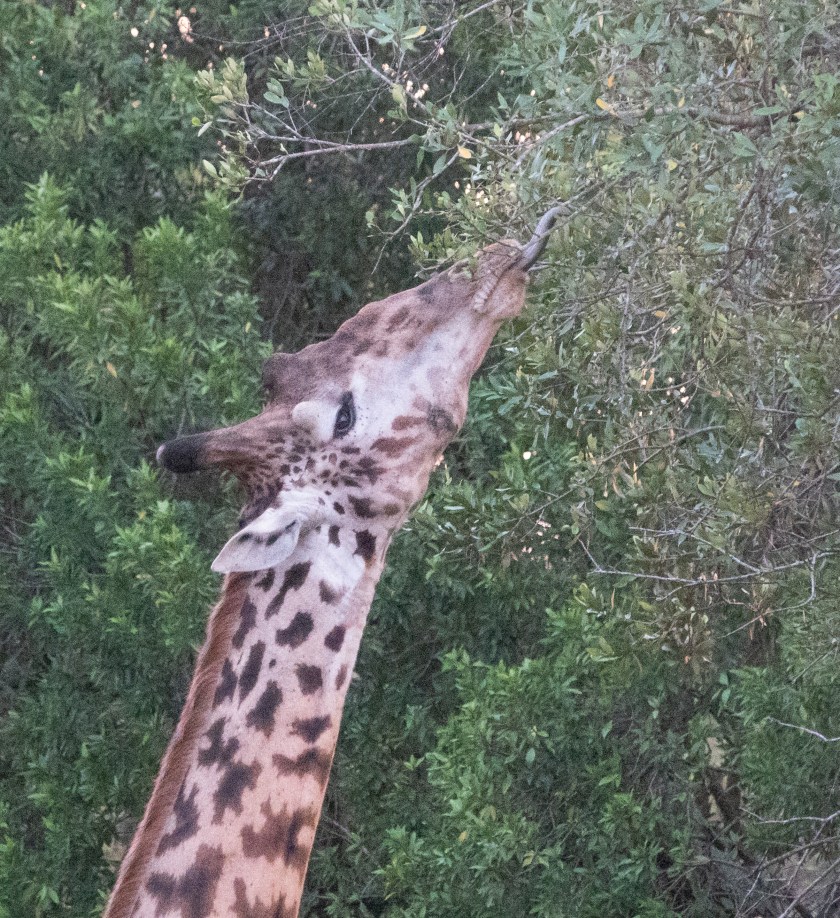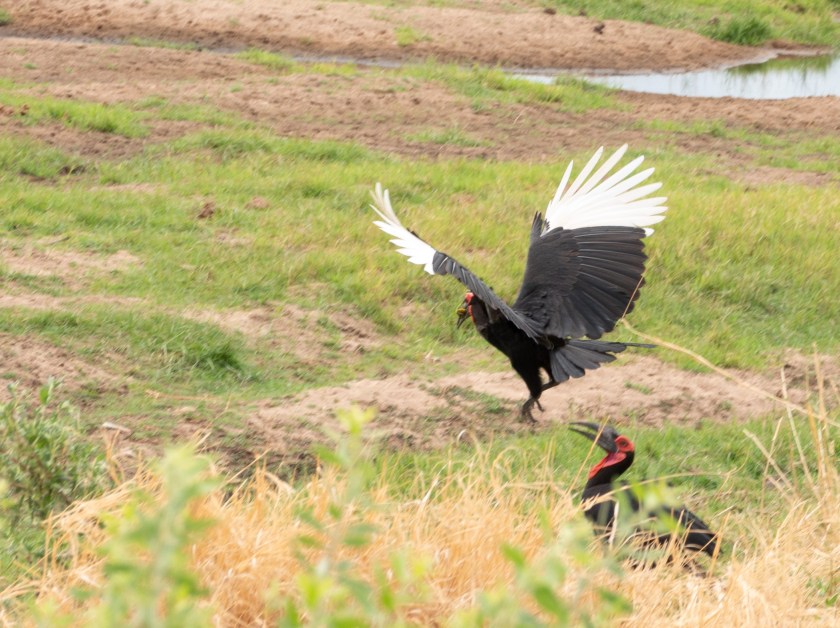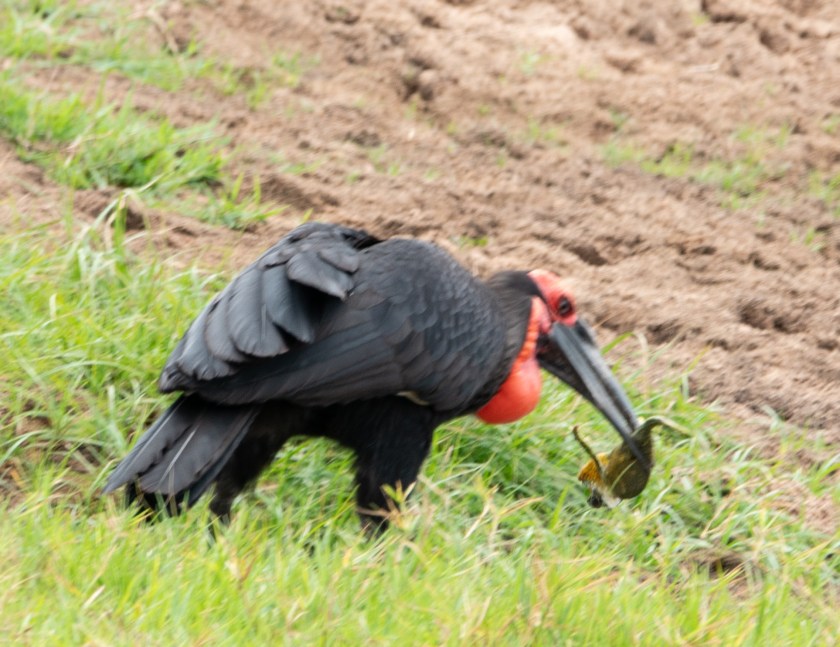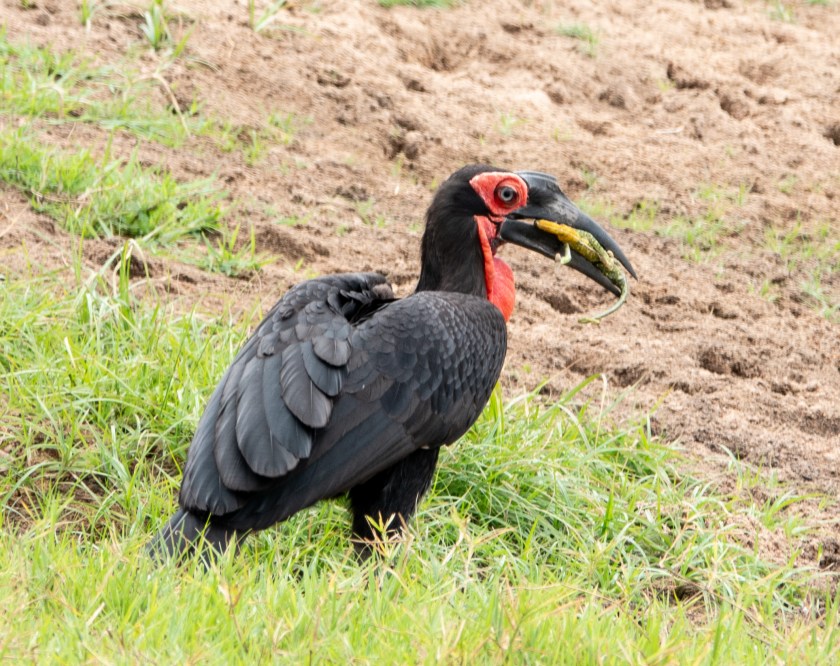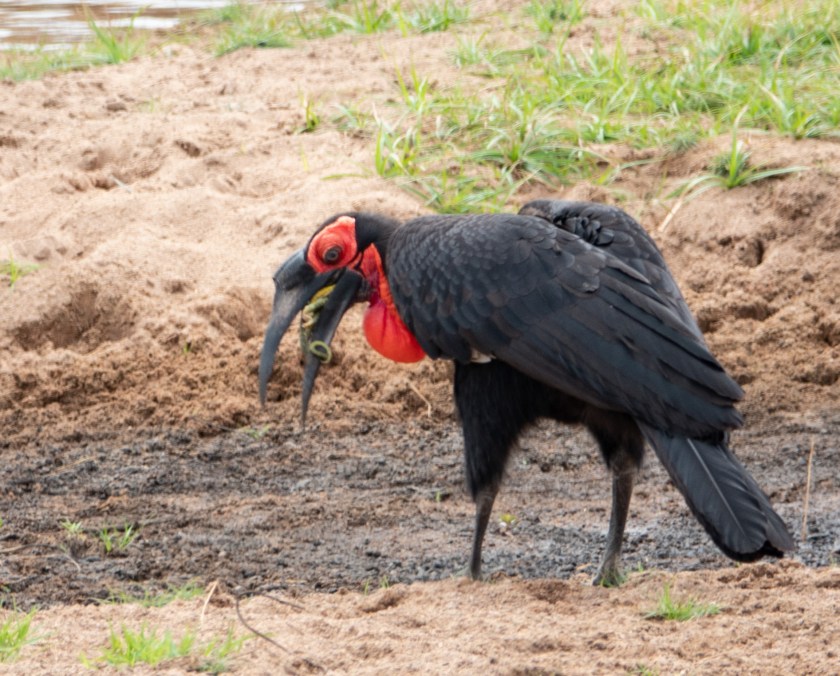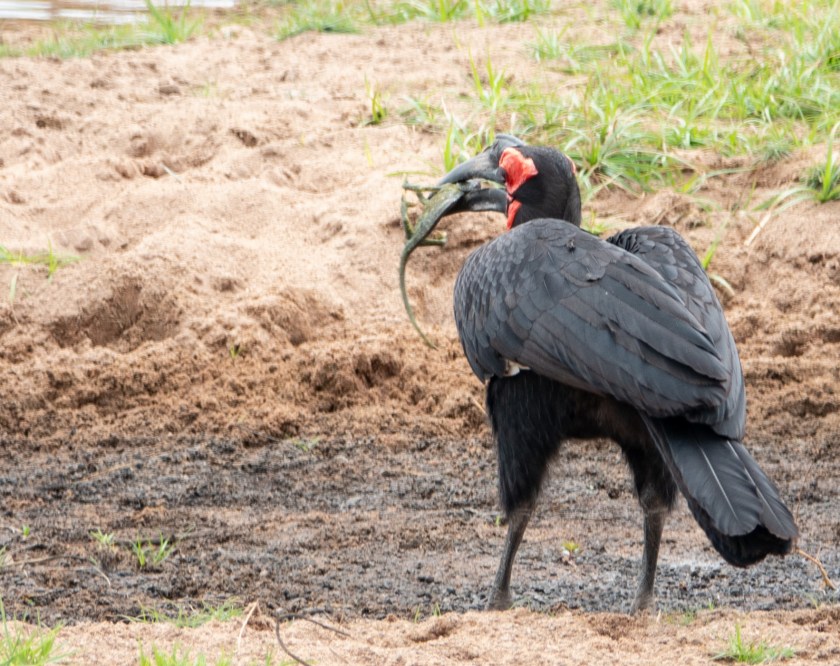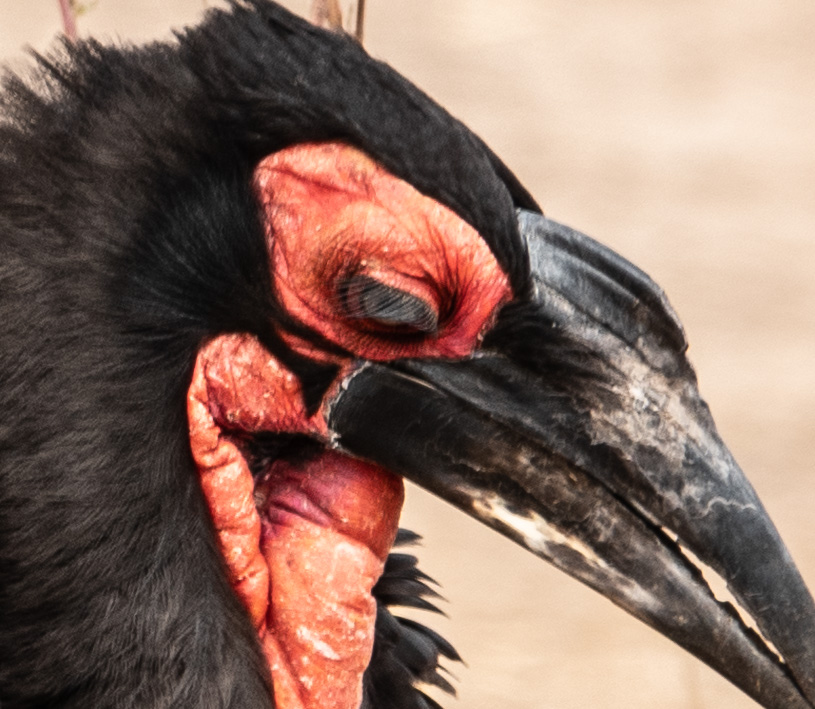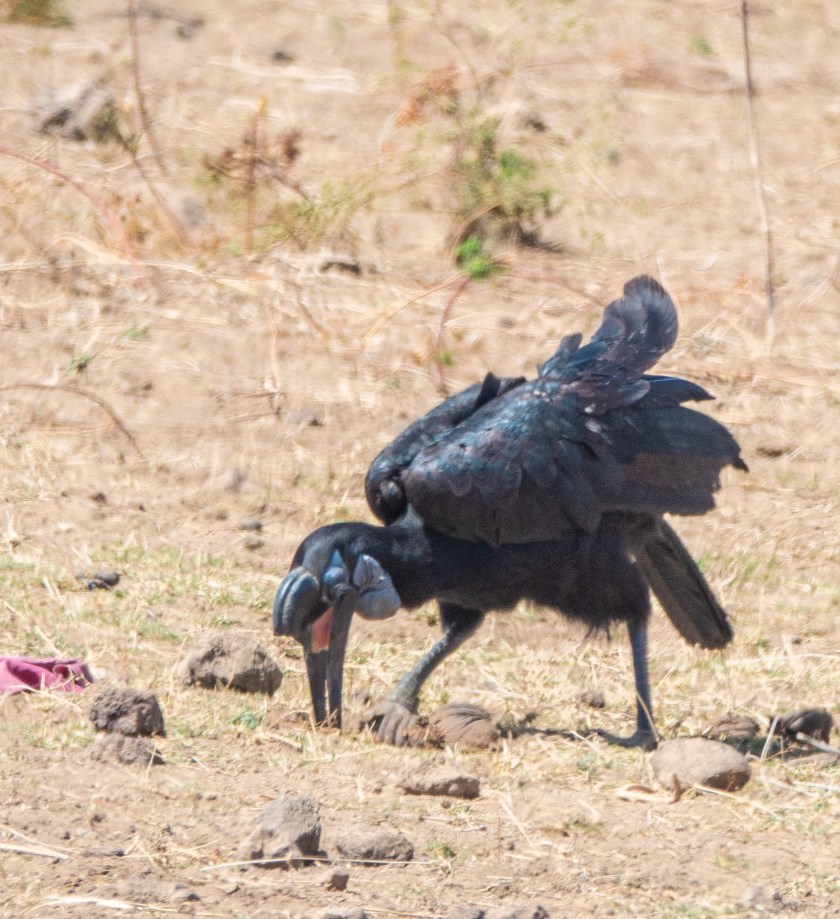In the world of the giraffe, all is not sweetness and light. Males fight for dominance in extraordinary neck fights. I have never seen this before, and it looked more like sort of a tai ch’i slow motion dance than a fight to the death, but our guide assured us this was the real thing.
I still suspect it was two youngsters sparring to get in a little practice, and when it was over they wandered off in opposite directions none the worse for wear. Serious battles can leave the loser knocked out or even dead. This 4-minute video is well worth watching for its explanations of the physiology, as well as a couple of truly violent fights.
My two seemed pretty friendly by comparison!
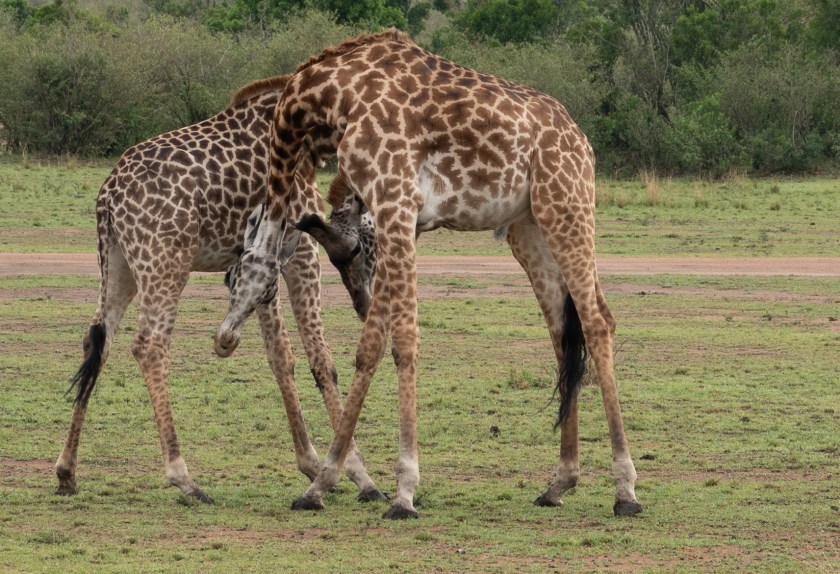
Less dramatic, but still not good for quality of life, is Giraffe Skin Disease. It causes skin lesions on the backs of the legs, but it doesn’t seem to kill the giraffes. The cause is unknown, but it is more prevalent in areas with poor soil, and less acacia, like the Ruaha.
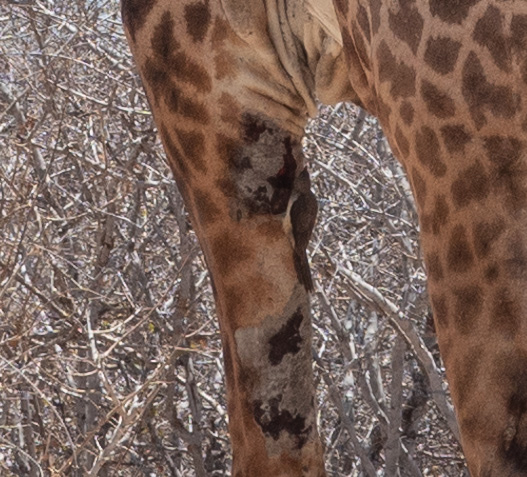
One encouraging development for the survival of the giraffe is a reconsideration of how many species of giraffe scientists should distinguish. This matters, because conservation laws and policies often operate at the species level , and currently all giraffe are lumped together in one species , as Vulnerable, but not yet Endangered, affording them less protection.
A study by Hennessy et al in Current Biology in 2016 proposes on the basis of DNA data that the giraffe is not a single species, but four distinct species – the northern giraffe (Giraffa camelopardalis), southern giraffe (Giraffa giraffa), reticulated giraffe (Giraffa reticulata) and Masai giraffe (Giraffa tippelskirchi). If this proposal results in a new classification, conversation efforts will be strengthened.
For lots of good information, and a way to help, click here: https://giraffeconservation.org
An African ecosystem bereft of giraffes would be a terrible thing: imagine a world in which children no longer knew what a giraffe was, and you couldn’t sing Raffi’s wonderful Joshua Giraffe to them. (There is a link to the song below, but I am not totally sure posting it is OK (though I did buy the song), or whether it violates copyright. I suspect many of you can hear it inside your heads anyway as the result of hours of long car journeys with small children in the back seat.)

